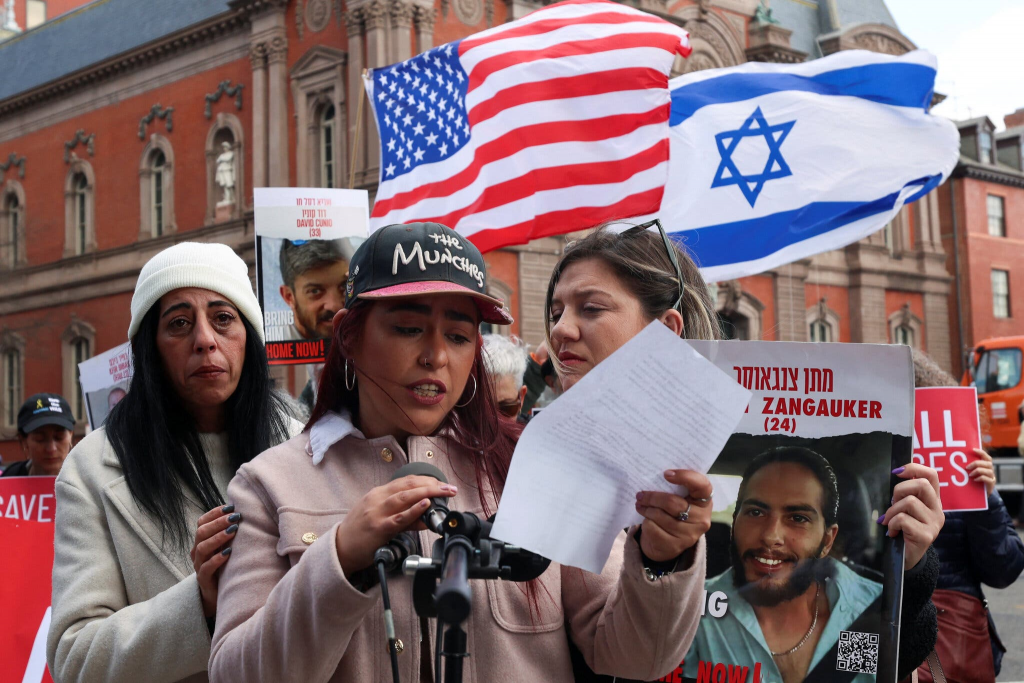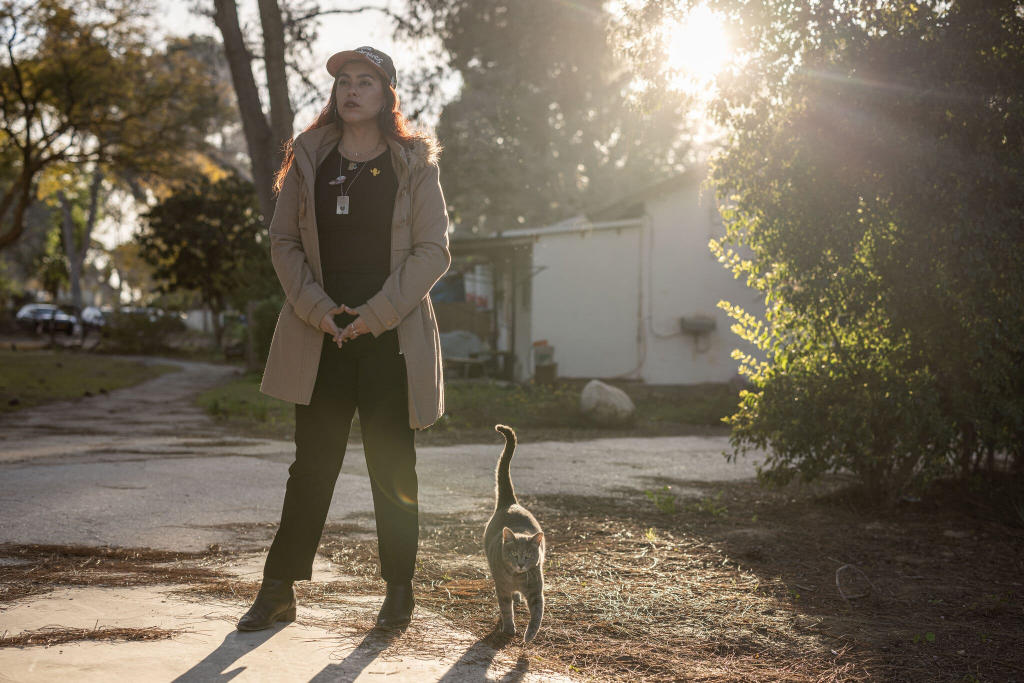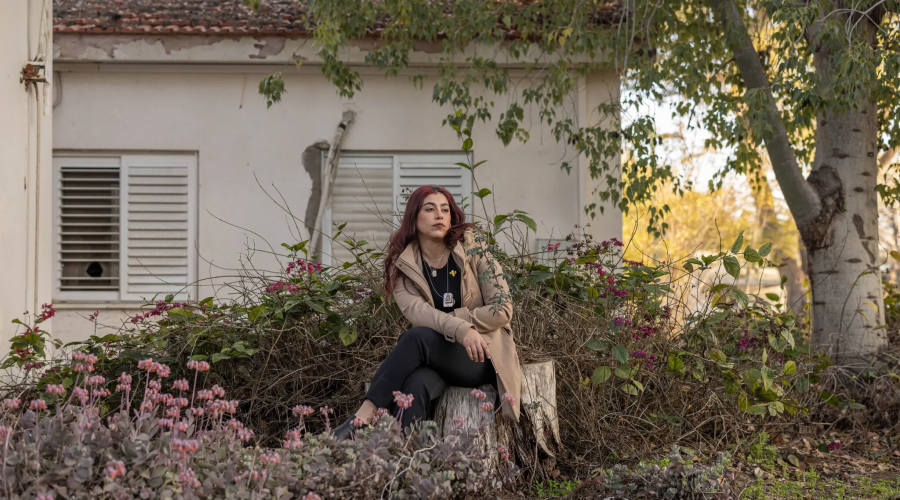More than 15 months have passed since Ilana Gritzewsky was released from captivity by Hamas in Gaza, but she still does not feel free. Her partner, Matan Zangauker, remains a hostage. Both were captured from their home in an Israeli border village on October 7, 2023, during the Hamas-led attack that started the war in Gaza. Since her release, Gritzewsky, 31, has dedicated herself to campaigning for the release of the remaining hostages, including Zangauker, 25, and two other men she last saw in a Hamas tunnel while she was held in captivity.
They were all taken from the same Israeli kibbutz, Nir Oz, near the border with Gaza, along with approximately 250 other hostages. Now, according to the Israeli government, only around 24 living hostages remain in Gaza, along with the remains of at least 35 others who were captured that day. Gritzewsky has shared that during her captivity, she was beaten and molested by her captors as they drove her to Gaza. She passed out during the journey and woke up in Gaza surrounded by gunmen, half-naked, terrified, and vulnerable.
The hostages’ situation has become more precarious as Israel has returned to fighting in Gaza in an effort to pressure Hamas to release the remaining captives, while cease-fire negotiations remain at a standstill. Gritzewsky’s concern over the fate of those still held in Gaza has left her with little time for her own healing. She expressed that she is not able to focus on her own rehabilitation, neither physically nor mentally, and that she constantly lives with the question of why she was released while others were not. She also mentioned that she feels she was spared so she could raise her voice to help those still alive regain their freedom and ensure the proper burial of those who did not survive.
Her efforts are part of a larger debate in Israeli society regarding the country’s priorities. Some people support prioritizing the release of the hostages at all costs, even if it means allowing Hamas to maintain power in Gaza temporarily. Others, including powerful ministers in the Israeli government, want to defeat Hamas, even if it means delaying or preventing the release of the hostages.
Zangauker’s mother, Einav Zangauker, has become a vocal figure in protests led by some of the hostages’ families, frustrated with what they see as the Israeli government’s delays in negotiating the release of the captives. Some former hostages and families of the captives have also turned to the Trump administration for help. Several recently freed hostages traveled to the United States this month to meet with President Trump and other administration officials.
Gritzewsky, who immigrated to Israel from Mexico as a teenager, had been running a confectionery business before working on a medical cannabis farm in Nir Oz, where she met Zangauker. They became a couple and lived together. On the morning of October 7, when the gunmen attacked Nir Oz, they went house to house until they reached Gritzewsky and Zangauker’s home. The couple tried to escape by jumping out of the window of their safe room as assailants shot at the door. They ran in separate directions, and Gritzewsky was quickly captured. She was beaten, and the captors forced her onto a motorcycle to drive her to Gaza.
She recalled the men covering her head with a piece of nylon or tarpaulin, and during the ride, one of the kidnappers pressed her leg against the motorcycle’s exhaust pipe, burning it. She also said one of her captors groped her while she was being transported. She passed out during the ride and woke up in Gaza, surrounded by seven gunmen. Though she doesn’t know exactly what happened during the time she was unconscious, she believed telling her captors that she had her period likely saved her from further assault. She expressed her gratitude for this, saying she had never been so thankful for her period.

Gritzewsky was moved from place to place in Gaza during her captivity, primarily held in private residences, a hospital, and, near the end, in a tunnel. She was interrogated about her military service, which she completed a decade ago. One of her captors threatened that even if there was a deal for her release, she would not be let go because he wanted to marry her and have children with her. Another captor told her he was a mathematics teacher, and a third was a lawyer. They stole her jewelry, including earrings and a bracelet.
During her captivity, Gritzewsky learned that Zangauker was also being held in Gaza. She described him to one of her captors, who confirmed that Zangauker was indeed among the hostages. However, she never saw him during her captivity.
Gritzewsky was released on November 30, 2023, during a ceasefire that allowed for the exchange of many hostages, including women and children, for Palestinian prisoners. Upon her return, she discovered that she had a broken hip. Gritzewsky’s therapist, Avigail Poleg-Dvir, said Gritzewsky had shared the details of her abduction, the assault she suffered, and her time in captivity with her. She also relayed these details to Israeli police investigators. Hamas did not respond to requests for comment.
A United Nations report published last year documented evidence of sexual violence committed by participants in the October 7 Hamas-led attack, including instances of rape and sexual torture. The U.N. commission also accused Israel of sexual and gender-based violence during its operations in Gaza.

In December 2024, Hamas released a video showing Zangauker in captivity. In the video, Zangauker begged Israeli officials to make a deal to bring him and the other hostages home. Human rights organizations and international law experts have noted that hostage videos are typically made under duress and that the statements made in them are often coerced. Israeli officials have referred to these videos as psychological warfare, and some experts argue that their production can be classified as a war crime.
However, for Gritzewsky, the video provided proof that her partner was still alive. She said that the man in the video did not look like the Matan she knew — he was thin, his eyes were filled with fear, and he appeared to be screaming for help. Although it devastated her, Gritzewsky found hope in knowing that her partner had survived.
